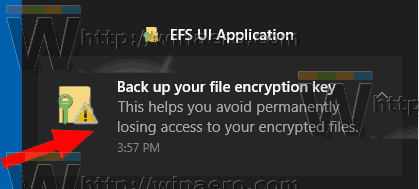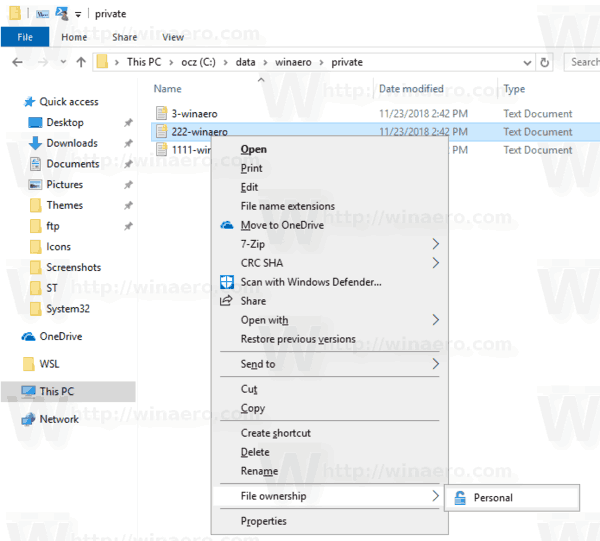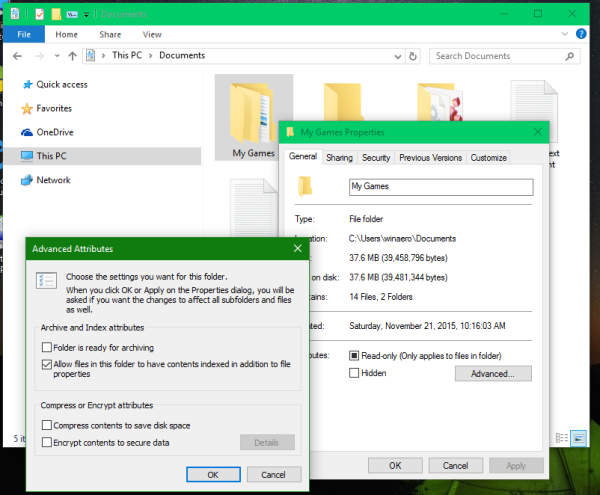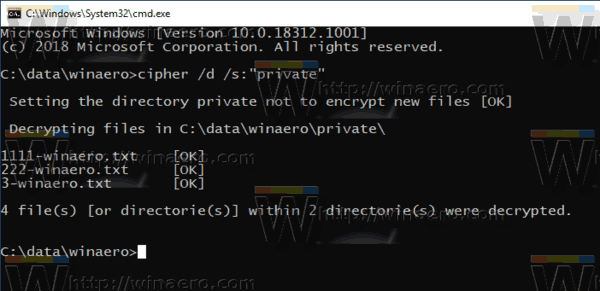In our recent article, we reviewed how to encrypt a file or folder in Windows 10 using EFS. Today, we will see how to decrypt your data. This can be done with either the File Explorer app, or with a command line tool, cipher.exe.
Advertisеment
Encrypting File System (EFS)
For many versions, Windows has included an advanced security feature called Encrypting File System (EFS). It allows the user to store files and folders encrypted, so they will be protected from unwanted access. Other user accounts cannot access your encrypted files, neither can anyone from the network or by booting into another OS and accessing that folder. This is the strongest protection which is available in Windows to protect individual files and folders without encrypting the whole drive.
When a folder or file is encrypted using Encrypting File System (EFS), the File Explorer app shows a pad lock overlay icon for such a file or folder.
![]()
When you encrypt a folder, new files saved into that folder will automatically be encrypted.
Note: Encryption will be disabled for a folder, if you compress it, move it to a ZIP archive, or copy to a location that doesn't support NTFS encryption with EFS.
When you encrypt a file or folder, you might be prompted to backup your your file encryption key to help avoid permanently losing access to your encrypted data.

For reference, see
Encrypt Files and Folders using EFS in Windows 10
Here are a number of methods you can use to decrypt your encrypted files. Let's review them.
To decrypt a file or folder in Windows 10, do the following.
- Right-click on the file or folder you want to decrypt in File Explorer.
- Select File Ownhership from the context menu.
- Select Personal.

The selected item is now decrypted.
Decrypt Files and Folders using Advanced Properties
- Right-click on the encrypted file or folder, and select Properties from the context menu. See How to open file or folder properties quickly in Windows File Explorer.
- In the Properties dialog, click the Advanced button on the General tab.
- Turn off the option "Encrypt contents to secure data".

- If prompted, select either Apply changes to this folder only or Apply changes to this folder, subfolders and files according to what you want.
You are done.
Decrypt File or Folder Using Command Prompt
- Open a new command prompt
- To decrypt a folder, type the following command:
cipher /d "the full path to your folder". - To decrypt a folder with subfolders and files, type:
cipher /d /s:"the full path to your folder". - To encrypt a single file, run the command
cipher /d "the full path to the file".
Example:

That's it.
Articles of interest:
- How to add encrypt and decrypt commands in Windows 10 right click menu
- Erase free space securely in Windows without third party tools
- Encrypt Offline Files Cache in Windows 10
Support us
Winaero greatly relies on your support. You can help the site keep bringing you interesting and useful content and software by using these options:

Hello,
I would like to decrypt files that I encrypted under Windows XP. Now I have a PC with Windows 10 Pro. The Windows XP machine now runs Ubuntu, so I do not have the EFS key anymore. The files I need to decrypt and recover are mainly PDF, XLS, DOC. Will your software decrypt and recover these files?
Thanks,
Matej